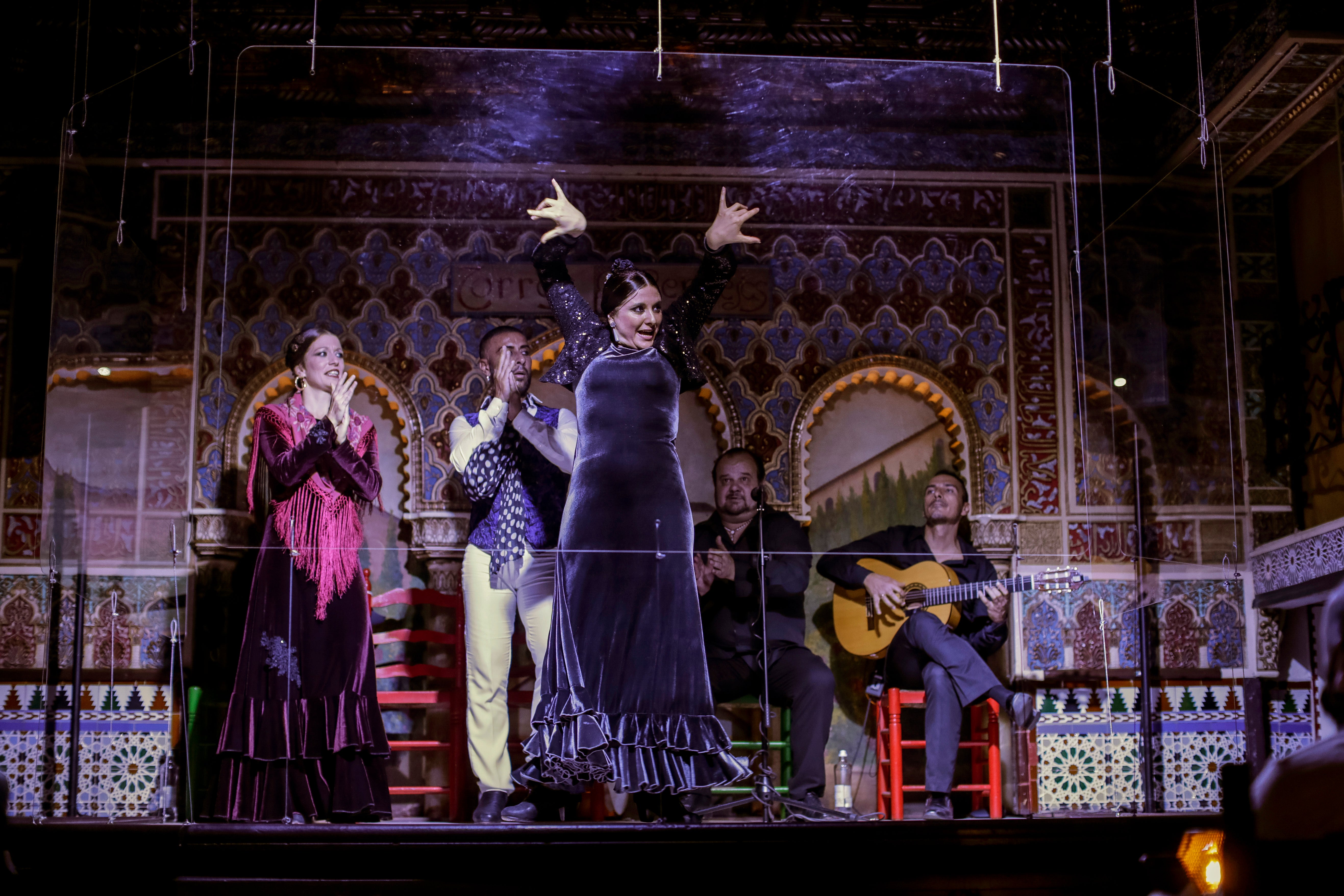AP PHOTOS: Madrid flamenco venue reopens amid COVID crisis
The passion and drama of live flamenco shows are back on stage in Madrid

Your support helps us to tell the story
From reproductive rights to climate change to Big Tech, The Independent is on the ground when the story is developing. Whether it's investigating the financials of Elon Musk's pro-Trump PAC or producing our latest documentary, 'The A Word', which shines a light on the American women fighting for reproductive rights, we know how important it is to parse out the facts from the messaging.
At such a critical moment in US history, we need reporters on the ground. Your donation allows us to keep sending journalists to speak to both sides of the story.
The Independent is trusted by Americans across the entire political spectrum. And unlike many other quality news outlets, we choose not to lock Americans out of our reporting and analysis with paywalls. We believe quality journalism should be available to everyone, paid for by those who can afford it.
Your support makes all the difference.The passion and drama of live flamenco shows are back on stage in Madrid but the performers are dancing behind plastic screens and keeping their distance from audiences.
Torres Bermejas, a flamenco show venue in Spain's capital, reopened its Moorish-style front door to customers after spending seven months closed due to the COVID-19 pandemic. It was the first “tablao” to resume business.
Lying just off the Gran Via, one of Madrid's main thoroughfares, the snug venue has burst back to life with its thrilling blend of “baile” (dance), “cante” (singing) and “toque” (guitar-playing.)
The venue checks customers’ body temperatures before they can enter and put a host of other precautions in place, including powerful air filters.
The goal is to lure back people who are wary of mingling in public and becoming infected.
The rectangular stage at Torres Bermejas juts out toward the tables on three sides. Most are set for two, with a candle in the middle. The nearest one is several meters (yards) away from the performers.
The hollow wooden stage is essential for dancing the “zapateado” -- a rhythmic stomping that makes the platform vibrate.
The artists perform without masks, behind see-through screens that are suspended from the ceiling and raised about 1 meter (3 feet) from the floor.
In the dressing room, face masks lie amid jewelry, and a guitarist wears a mask as he tunes his instrument.
With multi-colored tiles on the walls and ceiling, the venue is decorated in the style of the famed Alhambra palace in Granada, in southern Spain’s Andalusia region. Flamenco is an Andalusian art form.
Torres Bermejas, which opened 50 years ago, is one of Spain's most celebrated “tablaos.” Famous names from the flamenco world such as Camarón and Paco de Lucía have played here.
Tourists have in recent times been the main source of business for flamenco venues, but Spain's tourism sector is reeling from global travel restrictions.
Businesses are trying to make up for the downturn by turning to locals. But the Madrid region has become Europe's COVID-19 hot spot during the pandemic's second wave. As of Thursday, the capital region had a 2-week infection rate of 695 cases per 100,000 people — the highest in Europe.
On top of that, social distancing requirements mean fewer tables, which is another drag on profits. Only 50 people are allowed into each performance at Torres Bermejas. They must wear masks except when they are sitting at their tables.
The Madrid regional government has promised financial help for the “tablaos.” But some have already succumbed to the economic impact of the virus. Two venues, the famed “Casa Patas” and “Café de Chinitas,” have shut down.
___
Follow AP’s pandemic coverage at http://apnews.com/VirusOutbreak and https://apnews.com/UnderstandingtheOutbreak